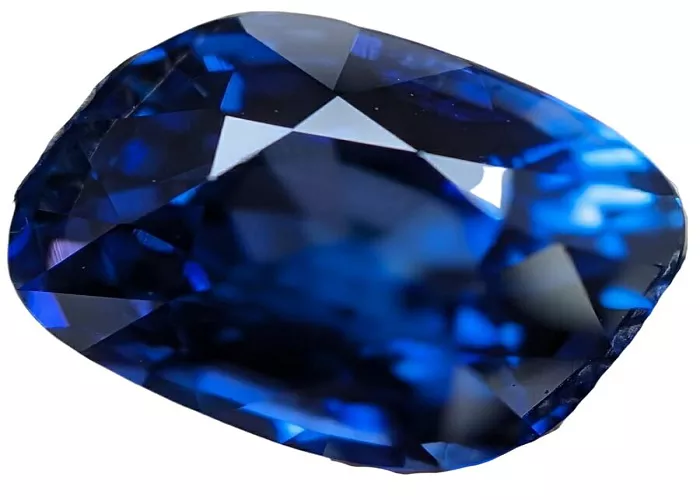Sapphires are beautiful and valuable gemstones. They come in many colors, but blue is the most famous. Because sapphires are expensive, fake ones are common. As a jeweler, I know how to spot real sapphires. This guide will teach you the same.
You will learn what a real sapphire looks like, simple tests to check if a sapphire is real, professional tests jewelers use, common fake sapphires and how to spot them, and why certification is important.
What a Real Sapphire Looks Like
Sapphires are a type of corundum, a hard mineral. Only diamonds are harder. Real sapphires have certain features.
Natural sapphires are rarely one solid color. Most have slight color changes in different light. Blue sapphires often have velvety or deep blue tones. Some sapphires have color zoning, meaning lighter and darker areas.
Most natural sapphires have tiny flaws called inclusions. Perfectly clear sapphires are rare and expensive. Common inclusions include silk, which are tiny needle-like lines, crystals, or fingerprint-like marks.
Sapphires are cut to enhance color, not just sparkle. Common cuts include oval, round, cushion, and emerald. Poor cuts may mean lower quality or a fake stone.
Sapphires are dense, so they feel heavy for their size. A very large, flawless sapphire is likely fake or lab-grown.
Simple Tests to Check If a Sapphire Is Real
You don’t need special tools for these tests.
Breathe on the sapphire like fogging a mirror. A real sapphire clears up fast in one to two seconds. A fake one, like glass, stays foggy longer. This happens because real sapphires conduct heat well, so fog disappears quickly.
Sapphires are very hard, ranking 9 on the Mohs scale. Try scratching glass or a steel knife with the sapphire. If it scratches them easily, it’s likely real. If it gets scratched, it’s fake. Be careful with this test—only do it on loose stones to avoid damaging jewelry.
Shine a flashlight through the sapphire. A real sapphire shows uneven color and some shadows. A fake one, like glass, may show bubbles or too-perfect color.
Drop the sapphire into a glass of water. A real sapphire will sink fast because it’s dense. A fake one, made of plastic or glass, may float or sink slowly.
Professional Tests Jewelers Use
If you want to be sure, jewelers use these methods.
Under a jeweler’s loupe or microscope, a real sapphire shows tiny natural flaws and color zoning. A fake sapphire may have bubbles if it’s glass or perfectly even color if it’s lab-grown.
Some sapphires glow under UV light. Natural sapphires may show weak fluorescence. Fake ones, like glass, often don’t react.
A refractometer measures how light bends in the stone. Real sapphire has a refractive index between 1.76 and 1.77. Fakes like glass or spinel will show different numbers.
A dichroscope checks for double refraction. Real sapphires show two colors when viewed from different angles. Fake ones, like glass, show only one color.
Common Fake Sapphires and How to Spot Them
Many fake sapphires exist. Here’s how to detect them.
Glass sapphires often have bubbles inside, too-perfect color, and scratch easily.
Lab-grown sapphires are real corundum but man-made. They look too perfect with no natural flaws. Under magnification, they may show curved growth lines. They are cheaper than natural sapphires.
Spinel is a common simulant. It’s softer than sapphire, ranking 8 on the Mohs scale, and has a different refractive index. Cubic zirconia is much lighter and has too much sparkle compared to sapphire’s subdued shine.
Some sapphires are heated or dyed to improve color. Signs of dye include color rubbing off with acetone or uneven color patches.
Why Certification Is Important
The best way to confirm a sapphire is real is with a gem lab report.
Reputable gem labs include the Gemological Institute of America, the American Gem Society, and the International Gemological Institute.
A report shows whether the sapphire is natural or lab-grown, any treatments like heat or dye, and details like weight, measurements, and quality grade.
Always buy sapphires with a certificate if they’re expensive.
Final Tips for Buying a Real Sapphire
Buy from trusted jewelers, not random online sellers. Ask for a certificate if the sapphire is expensive. Check for inclusions, since flaws mean it’s likely natural. Avoid too-good-to-be-true deals—real sapphires aren’t cheap. Get a professional appraisal if unsure.
Conclusion
Real sapphires are valuable and beautiful. Fake ones can look convincing, but with the right tests, you can tell the difference. Use simple tests like the fog or scratch test first. For certainty, get a professional inspection or certificate.
Now you know how to spot a real sapphire like a jeweler.
Related Topics:


